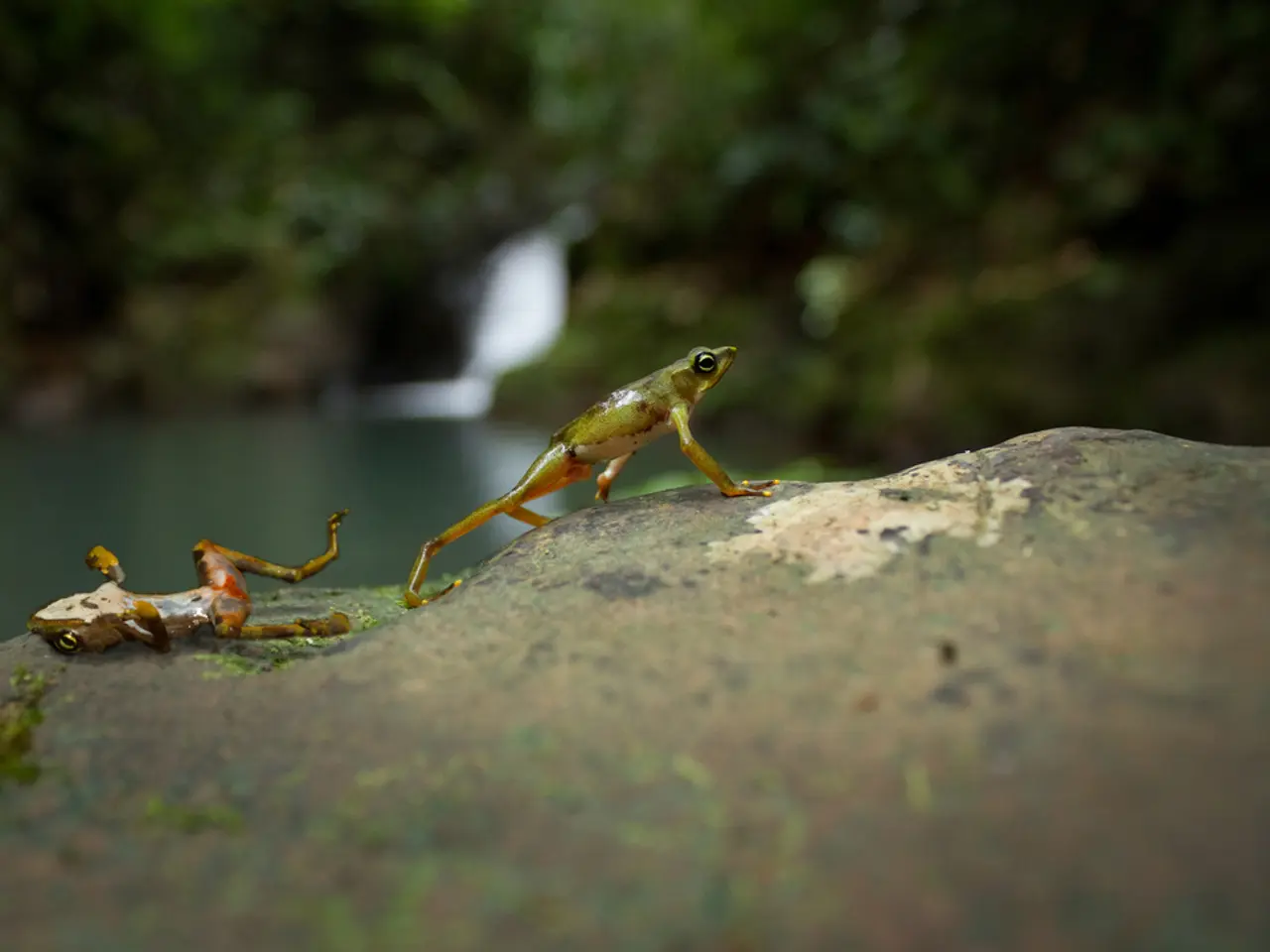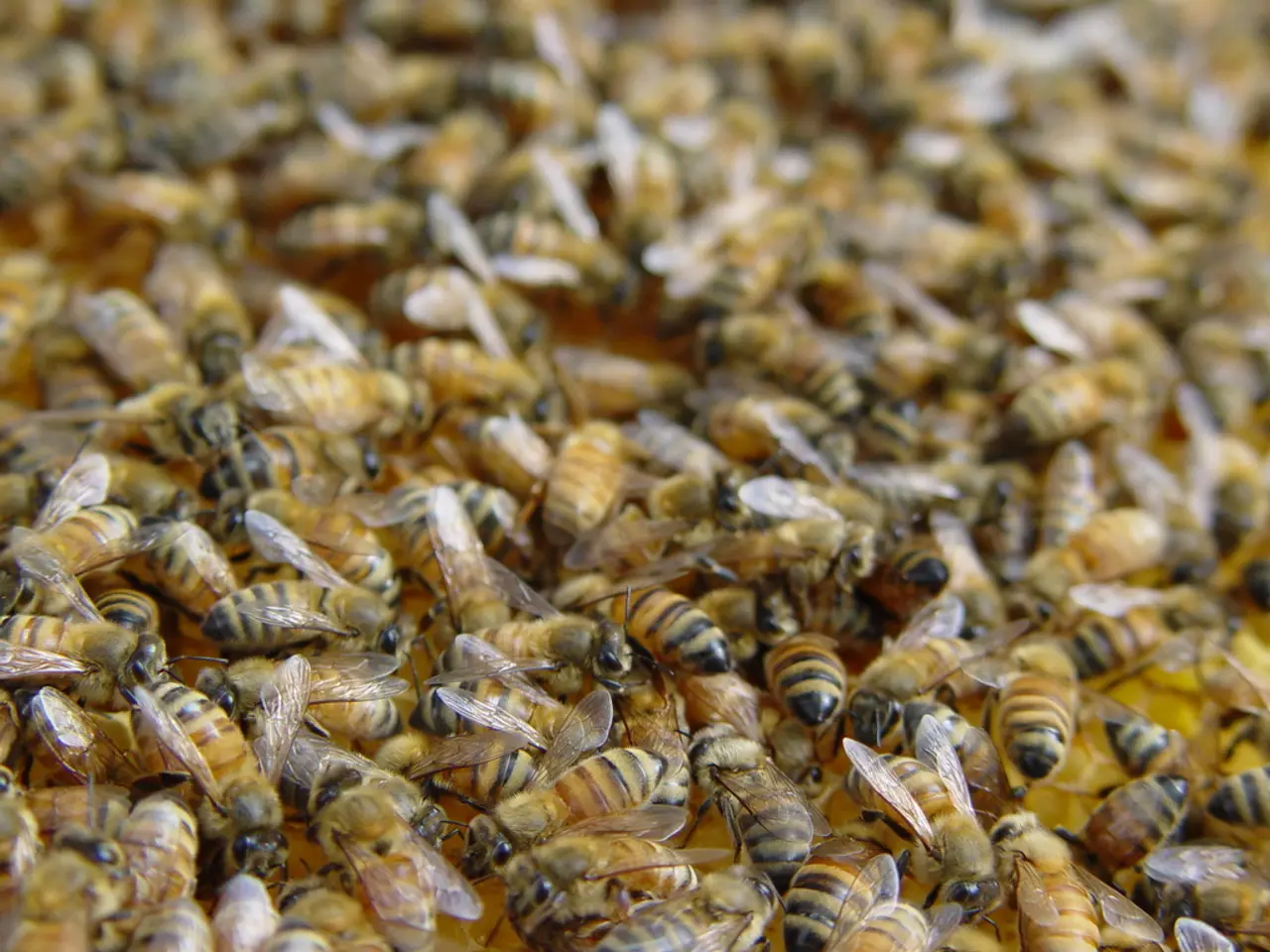Transparent frogs carry intriguing revelations
In the lush and verdant Andean foothills of Ecuador, a tiny, transparent creature goes unnoticed by many - the glass frog. These fascinating amphibians have captured the attention of scientists and nature enthusiasts alike, with their unique transparency and intriguing behavior.
The glass frog's transparency is a clever disguise, concealing its familiar shape from would-be predators such as birds, spiders, and snakes. This phenomenon is believed to be caused by young frogs physically rearranging the insides of their cells and tissues. Additionally, the frog's internal structures, including its muscles, scatter light in as few angles as possible, further reducing its visibility. Some species may also contain a substance in the fluid between their tissue cells that allows light to travel in a straight trajectory, further reducing opacity.
Interestingly, the first glass frogs likely had mothers do all the parenting, but some males took over parenting duties about eight million to 25 million years ago. Today, in some species, male glass frogs are stellar parents, protecting and caring for their eggs for weeks. They guard the eggs from predators such as frog flies and even transport water to the babies using their urinary bladder or belly skin.
Jesse Delia, a biologist at the American Museum of Natural History in New York City, and Carlos Taboada, who is studying a mechanism that allows glass frogs to blend into the green leaves on which they doze during the day, have been at the forefront of glass frog research. Anyelet Valencia-Aguilar, a behavioral ecologist at Switzerland's University of Bern, has also recorded deceptive behavior in at least two glass frog species in Ecuador, where males pretend to guard abandoned eggs to attract females.
Unfortunately, some glass frog species are critically endangered, endangered, or vulnerable to extinction due to agriculture, cattle grazing, and mining projects in the Andes. The International Union for Conservation of Nature lists 10 glass frog species as critically endangered, 28 as endangered, and 21 as vulnerable to extinction. There could be an advantage in conserving isolated populations of glass frogs, as governments, private companies, and nonprofits could be inspired to set aside these frog-rich patches of land as reserves.
The glass frog uses a high-pitched call to attract females, and during mating, males call to attract females and then engage in amplexus (where the male clasps the female) on the leaf. After the female deposits her eggs on the leaf, the male often remains to guard and protect the eggs from predators. This combination of territoriality, mating calls, and egg guarding is typical of glass frogs in Ecuador.
With their unique transparency, fascinating behavior, and delicate balance in the Andean ecosystem, the glass frog is a testament to the wonders of nature. Conservation efforts are crucial to ensure these remarkable creatures continue to thrive in their natural habitats for future generations to marvel at.
- The glass frog's transparency, a marvel of nature, serves as a disguise against predators, giving it an eerie invitation to the realm of green leaves and streams.
- In the field of environmental science, researchers like Jesse Delia and Carlos Taboada are unraveling the mysteries of the glass frog, unveiling secrets that may one day lead to breakthroughs in health-and-wellness and fitness-and-exercise.
- The Andean forests, home to the glass frog, are under threat due to human activities like agriculture, mining, and cattle grazing, pushing several species towards the brink of extinction.
- It's a captivating spectacle in natural history to witness the protective behavior of male glass frogs, traveling tiny streams with water for their offspring in bladder pouches and on their bellies.
- By studying the intricate behaviors and habits of the glass frog, scientists may gain valuable insights into conservation practices, furthering the science of environmental conservation.
- With their enchanting calls and captivating behavior, glass frogs serve as a symbol of the vibrant and delicate web of life, inspiring a sense of awe and urgency for preservation within the hearts of travelers and nature enthusiasts alike.




